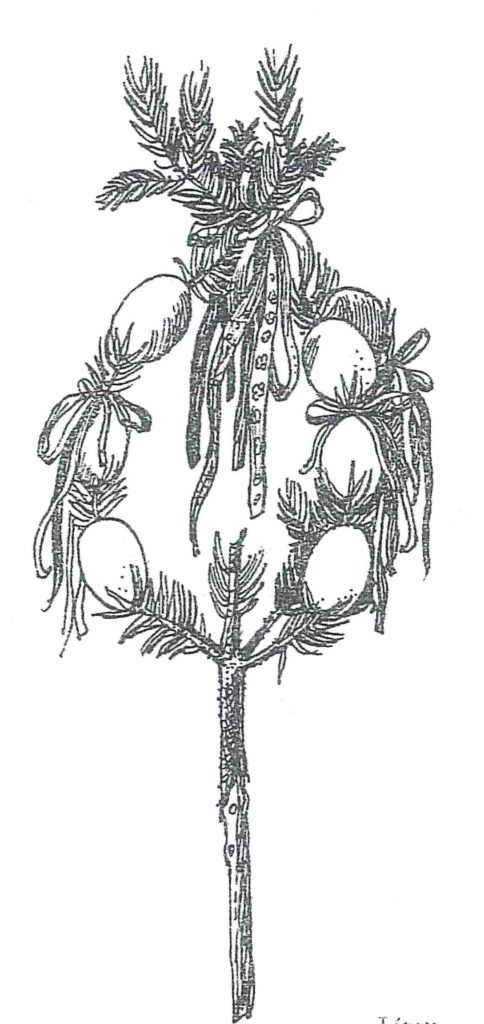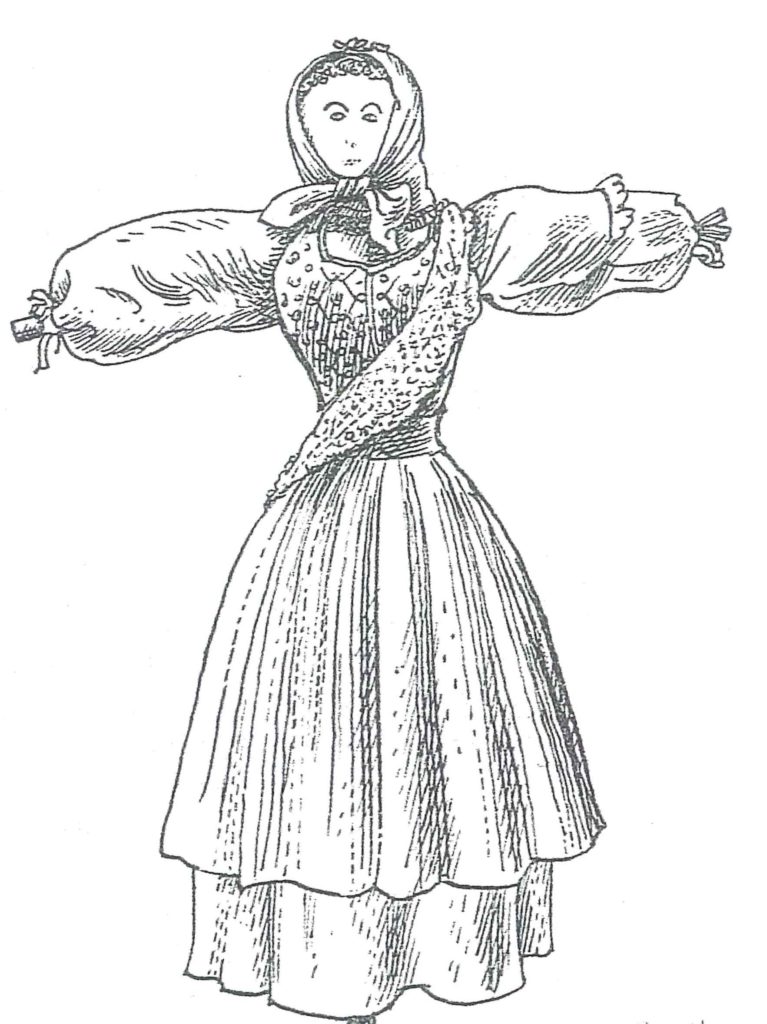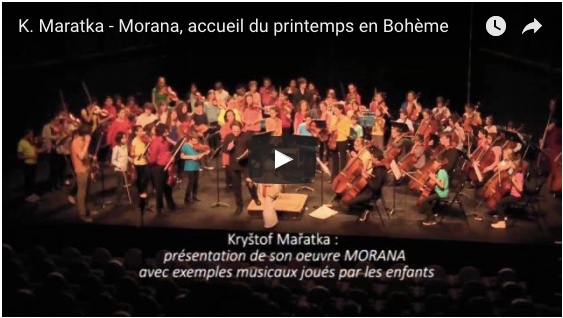MORANA
Welcoming Spring in Bohemia for Youth or Children’s String Orchestra
(2013)
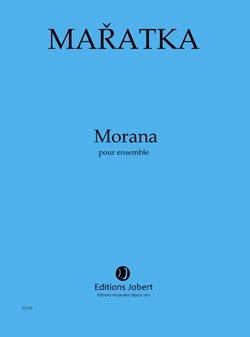
Piece for string orchestra of young people or children (with 3-4 years of instrument practice and upwards) inspired by a popular traditional custom
Duration: 10 min.
Commissioned by the Conservatoires of the Urban Community of Val de Bièvre, at the suggestion of Calliopée Ensemble and its artistic director Karine Lethiec, as part of their residence “A Czech Season” at the ECAM Kremlin-Bicêtre in 2013-2014, in partnership with ADIAM.
Instrumentation: string orchestra
Premiere: Orchestra of the Conservatoires of the Community of Agglomeration of Val de Bièvre (Arcueil, Cachan, Kremlin-Bicêtre, Fresnes, L’Haÿ-les-Roses), Kryštof Mařatka (conductor), April 11th, 2014, ECAM Kremlin-Bicêtre Theatre
The various parts are organized according to the degree of difficulty
The score proposes substitution parts in case of missing instruments (for example a viola part playing the missing cello part etc.)
The score offers ad libitum parts for various string and wind instruments. These can be played by teachers who have worked with the string group or by other soloists. They are optional “solo” parts that should not be doubled
Publisher: The Henry Lemoine Editions display more information on this work on
http://www.henry-lemoine.com/fr/catalogue/compositeur/maratka-krystof
For more information, contact:
Henry Lemoine Editions – Paris
Mrs Laurence Fauvet - Rental and purchase of score
orchestre@editions-lemoine.fr / +33 (0) 1 56 68 86 75
Jobert Editions
Henry Lemoine Editions – Paris
Mr. Benoît Walther - Promotion and distribution service
bwalther@editions-lemoine.fr / +33 (0) 1 56 68 86 74
Jobert Editions
Recording:
Extract from the score:
Notes on the work:
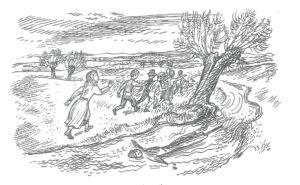
This work belongs to the category of so-called “easy” or “educational” pieces intended for young musicians and performers. It invites them to discover a traditional custom of Central Europe, to taste the appeal of folk music and to learn some words from the Czech language in a sung part.
Apart from the usual instrumental playing, the work also offers the opportunity to enjoy various sounds and modes of playing, such as glissando, sul ponticello, pizzicato, col legno, playing behind the bridge, harmonics, foot stomping, chanted words...
Morana, from the name of the Winter Goddess of Central European Celts, is probably the oldest pagan custom still alive today in Czech Republic. This ceremony of welcoming spring is practiced mainly by children and is based on the idea of “bringing Death out”, symbolizing the dreary winter of which one gets rid of. It is represented by a “female scarecrow” (Morana) made specifically for the occasion. It is later drowned in a river, or possibly burned, during a festive ceremony that marks the end of the winter season.
The work is composed of 6 parts:
- STROJENÍ / DISGUISE
With pieces of old wood and wisps of straw, the children build Morana: a “female scarecrow” symbolizing the dreary Winter. They dress it in white fabric and decorate it with various objects. - KOLEDA / CAROL SINGING
With Morana fixed on a wooden stick, the children walk across the village singing nursery rhymes and carols receive treats. - VYNÁŠENÍ / BRINGING OUT
Carrying Morana at the head of a procession, the children leave the village and head for the river to “bring Death out”. - U VODY / BY THE WATER
Once at the river, the children sing popular songs and melodies and then throw Morana in the water to get rid of her. - UTÍKEJTE! / RUN!
Right after having thrown Morana into the water, the children start running away so that the “drowned death” cannot catch up with them. - LÍTO
Líto is an object made of fresh branches, decorated with ribbons and coloured goose egg shells. Leaving the river behind, the children bring back “Líto” to the village instead of Morana who is now gone, thus announcing the arrival of Spring. They sing and celebrate the return of life.
